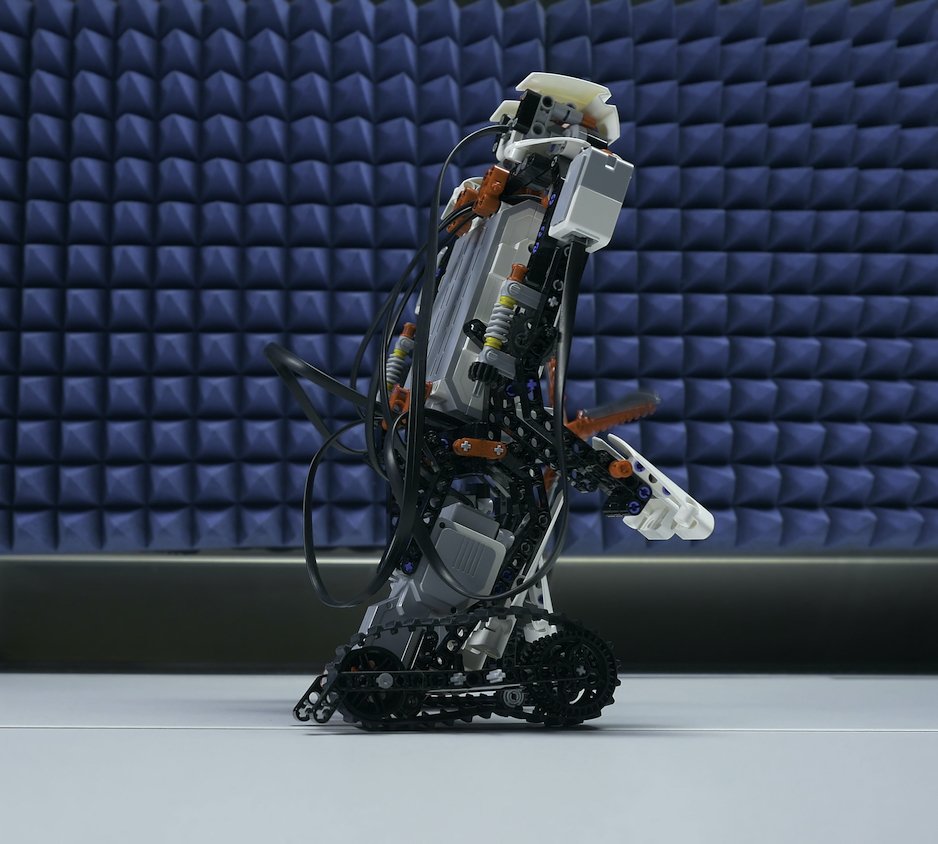Rebranding? Start by Looking Under the ‘Hood

Rebranding can feel like an exhilarating leap forward for a company. It’s an opportunity to present a refreshed, invigorated version of your business to the world.
However, before diving into the creative aspects of designing a logo, selecting a colour palette, or drafting new slogans, it’s vital to take a comprehensive look “under the hood” of your brand. This means understanding the essence of your market, target demographic, and unique service proposition (USP). Without these elements clearly defined, even the most visually stunning brand revamp can fall flat.
Why Is Understanding Your Market Essential?
Branding is much more than aesthetics—it’s about narrating your company’s story and aligning that story with what resonates most with your audience. Every detail of a brand, from its visual identity to the language it uses, needs to reflect not only who the company is but also who the audience is and what they find compelling.
The Role of Psychology and Neuroscience in Rebranding
To create a rebrand that goes beyond surface-level changes, it’s essential to delve into the principles of psychology, neuroscience, and behavioural economics. These fields provide invaluable insights into how consumers interact with and perceive brands. At its core, branding is about creating an emotional connection. People might be drawn to the aesthetics of a brand initially, but what keeps them engaged is the deeper emotional and cognitive response triggered by its elements.
Using Visual and Verbal Cues to Engage Your Audience
Understanding these psychological and neuroscientific cues can change how a brand approaches its messaging. For instance, research shows that certain colours can evoke specific emotions—blue often conveys trust and dependability, while red can signify energy or urgency. Similarly, the choice of language matters; terms that evoke sensory or emotional experiences are more likely to create lasting impressions than purely factual ones. The more your brand can tap into these subconscious preferences, the more authentic and engaging it becomes.

Behavioural Economics: The Science of Subtle Influence
Behavioural economics takes this understanding further by illustrating how people’s decisions are often influenced by subtle cues and the framing of choices. For example, people are more inclined to engage with brands that utilise social proof—showcasing user testimonials or customer stories—to foster trust and credibility.
Integrating these aspects thoughtfully into your rebranding process can elevate it from being a simple visual change to a strategic business move that resonates on a deeper level.
Know Your Target Market Inside Out
Knowing your target market is key to tapping into these psychological and emotional drivers. Every demographic has unique motivators, preferences, and pain points. What speaks to a tech-savvy younger audience may not connect with an older, more traditional consumer base. A successful rebrand starts by gathering this critical market intelligence, allowing your brand to adapt its identity and message to reflect those deeper insights.
Rebranding as a Strategic Tool for Long-Term Success
In the end, a rebrand is not just about looking refreshed; it’s about building trust, creating recognition, and nurturing loyalty. When done with an understanding of what truly influences your audience’s behaviour, a rebrand becomes more than just a new look—it becomes a strategic tool that strengthens your company’s connection with its customers and paves the way for long-term success.
You might also like:
Instead of simply addressing surface-level symptoms (like low traffic or poor conversion), Root Cause Analysis is a structured approach used to identify the true source of a problem, that helps you dig deeper to understand why the issue is happening in the first place.
When designing information transfer to drive sales conversions (bottom of the funnel) or boost brand awareness (top of the funnel), many businesses make a critical mistake, treating their website like an online pitch deck.
While both serve to communicate your brand’s value and the unique problems your product / service solves, they operate in fundamentally different ways.
‘Organisation antibodies’ are the people, processes, and cultural norms within an organisation designed to protect it from outside threats.
But by resisting disruption and clinging to the status quo, they can also slow vital change that vital for an organisation’s survival and throttle the diffusion of innovation that’s crucial for thriving.
How can leaders recognise these internal barriers?
In today’s digital landscape, brands are no longer just competing for visibility—they’re competing for your trust.
At Hiatus, we believe great design isn’t just about aesthetics; it’s about experiences.
And right now, there’s one innovation that’s reshaping the future of digital design: 3D. From creating immersive environments to rethinking brand storytelling, 3D design is more than a buzzword—it’s a revolution.
A single bad experience can put customers interacting with our brand again, let alone buying from us.
Whether we like to admit it or not, Customer Experience Design (CXD) is a key driver in organisational success.
But how can your business leverage CXD to create a ‘blue ocean’ in a crowded market and boost retention?
Rebranding can feel like an exhilarating leap forward for a company.
However, before diving into the creative aspects of designing a logo, selecting a colour palette, or drafting new slogans, it’s vital to take a comprehensive look “under the ‘hood” of your brand.
So, you’ve decided it’s time to change and enter new markets?
Great! But what happens when a competitor comes along (also seeking new markets) and knocks your stable market position away from you?
A growth engine is a system or process that a business or organisation uses to drive sustainable, scalable growth over time. It is the combination of all the strategies, tactics, and initiatives that a business uses to attract, retain, and monetise customers, and ultimately drive revenue and profitability. This how we make sense of it:
In today’s saturated market, businesses often face the challenge of standing out while building trust and loyalty among customers.
One essential concept that significantly contributes to a brand's success is brand congruence.
But what exactly does it mean, and why is it so pivotal for businesses?
Curiosity marketing is a dynamic strategy that taps into innate human curiosity to captivate audiences. It goes beyond traditional methods by strategically stimulating curiosity and prompting exploration. One key aspect is reward anticipation, strategically hinting at forthcoming benefits to excite consumers. This anticipation fuels their desire to learn more, making it a potent tool for start-ups seeking to generate interest in their offerings.
It might seem easy to assume that offering more options on your website would cater to a broader audience and increase engagement. However, more choices can actually have a negative effect on sales. This is where the concept of "choice overload" comes into play—a phenomenon that can significantly impact how users interact with your website.
A brand’s ‘surface area’ refers to the extent and variety of touchpoints through which a brand interacts with its audience.
These touchpoints can include everything from social media profiles and websites to physical locations, customer service interactions, and even word-of-mouth referrals.
The larger and more diverse your brand's surface area, the greater the opportunities for your target audience to encounter, recognise, and engage with your brand.
Early adopters are people who are among the first to try out and adopt a new product or technology. They are often highly interested in innovation and are willing to take risks to try out new things before the general public does. Early adopters can be influential in determining the success or failure of a new product or technology, as they can help to create buzz and generate interest among a wider audience. This is how we like to engage with them best:
Staying ahead of the competition requires a keen understanding of consumer behaviour and market trends.
One of the most effective ways to gain this understanding is by monitoring demand signals. But what exactly are demand signals, and how can businesses detect them?
Establishing trust with your website visitors is more critical than ever these days.
As the risk of working online continues to intensify, users are increasingly cautious about where they spend their time and money. To stand out from the crowd and foster credibility, it's essential to incorporate the most effective "trust signals" into your website.
In this article, we'll explore the top trust signals to prioritise in 2024 to build trust, enhance user experience, and drive conversions.
We all know, first impressions are vital for a business.
In the ever-changing landscape of business and sales, understanding the intricacies of consumer perception is paramount to your survival.
This is where the 'Halo Effect' – a psychological phenomenon that can significantly influence how your brand is perceived, really comes into own.
At its core, choice architecture uses principles from behavioural economics and social psychology to nudge users towards making decisions that align with their goals and preferences.
By strategically structuring options and information, we can guide users towards desired actions and outcomes, ultimately enhancing the effectiveness and usability of your website.
In this article, we will explore the concept of the Availability Heuristic, understand how it functions, and uncover how it can be harnessed to expedite a start-up’s growth trajectory.
A growth hypothesis is a statement or prediction that outlines the expected outcomes of a particular growth initiative or strategy. It is a key component of the growth process in a business or organisation, as it helps to identify specific goals and metrics that can be used to track progress and measure success. This is how we find it useful:
The build-measure-learn feedback loop is a concept that is central to the Lean Start-up methodology, a popular approach to building and scaling businesses. The basic idea is to iterate quickly through a series of small experiments in order to learn and improve, and ultimately develop a product or service that meets the needs of customers.
MVP stands for “minimum viable product”. It is a strategy used by startups and product development teams to create a basic version of a product or service with only the essential features necessary to solve a particular problem or meet a specific customer need. The idea is to create a basic prototype that can be tested and validated with customers, in order to gather feedback and data that can be used to refine and improve the product. Read on to find out how it is used for scaling quickly:
Freemium is a business model in which a company offers a basic version of its product or service for free, but charges for access to more advanced features or additional services. The word freemium is a portmanteau of free and premium. Read on to find out more:
Vanity metrics are data points or metrics that are often used to make a company or organisation look good, but do not provide meaningful insights or contribute to the business's bottom line. These metrics may create a sense of false success, as they may suggest progress or growth, but do not necessarily indicate that the business is achieving its core objectives or meeting its customers' needs. Here’s how we use them:
The Marginal Gains Theory, also known as the Aggregation of Marginal Gains, is a concept that originated in the world of sports performance but has since been applied to various domains, including business and personal development. It emphasises the idea that making small improvements across multiple areas can lead to significant overall enhancements in performance or outcomes. Read on to find out it applies to building an organisation up:
A scale-up business is a company that has moved beyond the start-up phase and has demonstrated the potential for rapid and sustained growth. Scale-up businesses are typically characterised by their ability to increase revenue and expand their operations at an exponential rate, often using innovative technologies or business models to drive growth. Read on to find out more.
A leap of faith assumption is an assumption or hypothesis made by an entrepreneur or business leader that has yet to be proven through empirical evidence or data. It is a critical assumption or core belief about a new product, service, or business model that forms the basis for the company's strategy and direction. This how we understand it:
Quiet hiring is a recruitment method in which companies fill open positions without publicising the job listing or making a formal announcement. Instead, they reach out to passive job seekers or members of their professional network who might be a good fit for the role. The goal of quiet hiring is to fill positions with top talent quickly and discreetly, without attracting a large volume of applications from unqualified candidates. This is the impact on start-ups:
Dealing with clients who’re "low ballers" requires a well-crafted strategy that balances the need to secure fair compensation with maintaining professional integrity and fostering healthy client relationships. This is how we find it works best:
About the Author:
Chris is the founder of Hiatus.Design, a mission-driven branding and website design company that works with clients all over the world.
Over the course of his life, he has travelled to more than 60 countries across six continents, earned two Guinness World Records, completed the legendary Marathon des Sables, summited Mont Blanc and unclimbed peaks in Asia, become a Fellow of the Royal Geographical Society (FRGS), rowed across the Atlantic Ocean and obtained a Masterʼs degree in Business Management (MA).






























